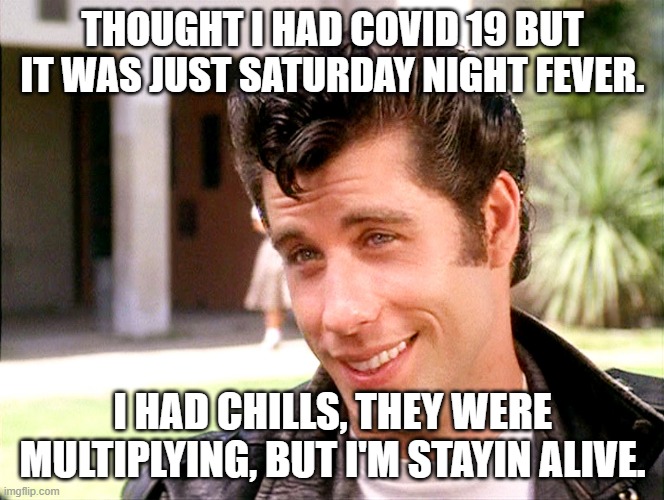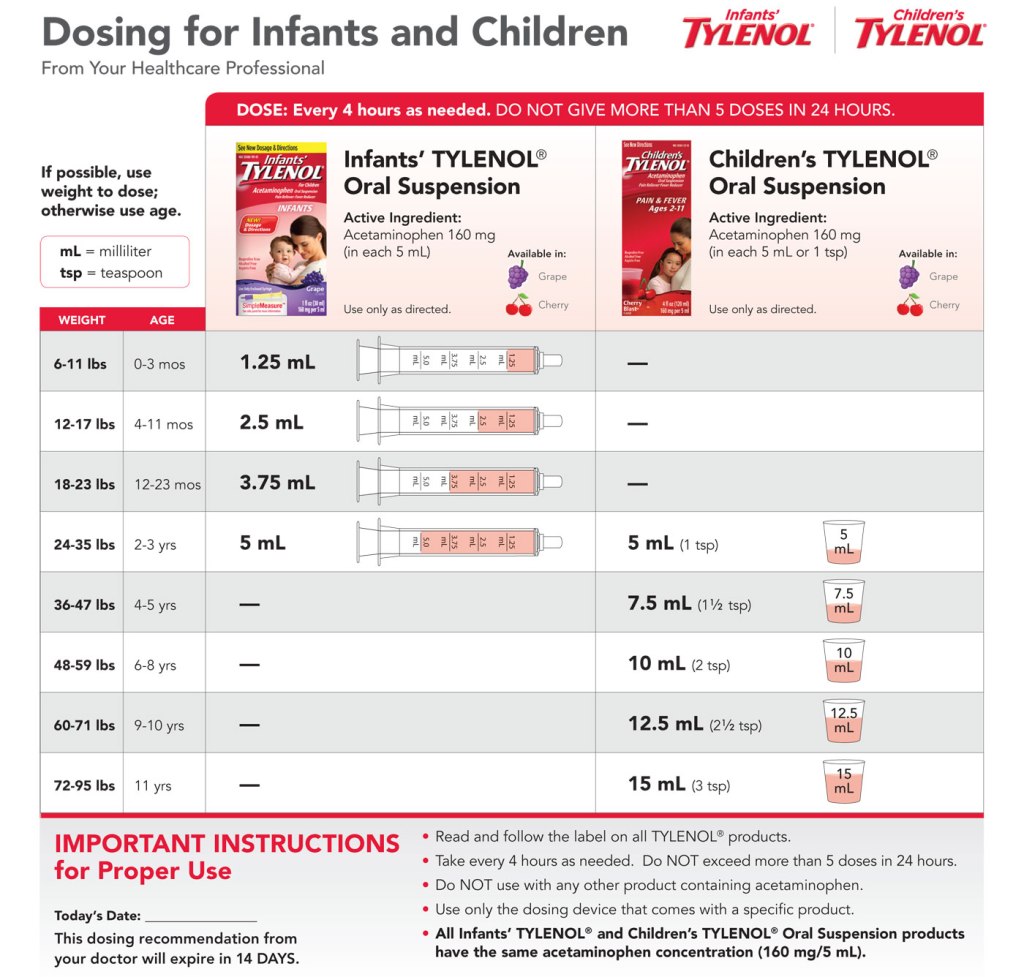Fevers are often a misunderstood symptom of illness. Why do we get them and what do we do about them?
A fever is a temporary rise in body temperature. It’s one part of an overall response from the body’s immune system. There are multiple reasons for fevers including infections, viruses, heat exhaustion, sometimes immunizations, and sometimes certain diseases like cancers or inflammatory illness can cause a fever.
When an invader enters the body the immune system begins a cycle of macrophages, white blood cells, monocytes, and lymphocytes to begin a cytokine induction which fights the invader. This is outwardly exhibited by an appreciable rise in body temperature – usually about 100.4 (give or take a tenth of a degree) and above is considered a fever.
Myth: If your perceived “normal” body temperature is always 97.6 and you have a temperature of 99.6 it’s considered a fever. Not entirely true! Yes it is a slight elevation in temperature and can indicate illness but it is not concerning. A temperature of 99.6 – 100.3 can be considered a low grade fever depending on the other symptoms and age of the patient. Body temperature can rise and lower for various reasons such as hot weather, exercising, hormones (if you’re trying to conceive and tracking ovulation, you would find out that when ovulation occurs the basal body temperature increases slightly but that’s for another post), or teething in infants. Don’t worry if a person’s temperature is in the 99’s but they have no other real symptoms.
When do we worry about a fever?

Per Penn Medicine: Contact a provider right away if your child:
- Is 3 months or younger and has a rectal temperature of 100.4°F (38°C) or higher
- Is 3 to 12 months old and has a fever of 102.2°F (39°C) or higher
- Is 2 years or younger and has a fever that lasts longer than 24 to 48 hours
- Is older and has a fever for longer than 48 to 72 hours
- Has a fever of 105°F (40.5°C) or higher, unless it comes down readily with treatment and the person is comfortable
- Has other symptoms that suggest an illness may need to be treated, such as a sore throat, earache, or cough
- Has had fevers come and go for up to a week or more, even if these fevers are not very high
- Has a serious medical illness, such as a heart problem, sickle cell anemia, diabetes, or cystic fibrosis
- Recently had an immunization
- Has a new rash or bruises
- Has pain with urination
- Has a weakened immune system (because of long-term [chronic] steroid therapy, a bone marrow or organ transplant, spleen removal, HIV/AIDS, or cancer treatment)
- Has recently traveled to another country
Contact your provider right away if you are an adult and you:
- Have a fever of 105°F (40.5°C) or higher, unless it comes down readily with treatment and you are comfortable
- Have a fever that stays at or keeps rising above 103°F (39.4°C)
- Have a fever for longer than 48 to 72 hours
- Have had fevers come and go for up to a week or more, even if they are not very high
- Have a serious medical illness, such as a heart problem, sickle cell anemia, diabetes, cystic fibrosis, COPD, or other long-term (chronic) lung problems
- Have a new rash or bruises
- Have pain with urination
- Have a weakened immune system (from chronic steroid therapy, a bone marrow or organ transplant, spleen removal, HIV/AIDS, or cancer treatment)
- Have recently traveled to another country
Call 911 or the local emergency number if you or your child has a fever and:
- Is crying and cannot be calmed (children)
- Cannot be awakened easily or at all
- Seems confused
- Cannot walk
- Has difficulty breathing, even after the nose is cleared
- Has blue lips, tongue, or nails
- Has a very bad headache
- Has a stiff neck
- Refuses to move an arm or leg (children)
- Has a seizure
What can we do about a fever?
- Remove excess clothing, blankets, jackets, hats, socks etc.
- Try Acetaminophen (Tylenol, Fever-All, Paracetamol). Usually dosed for children at 15 mg/kg, follow the chart on the bottle, or per doctor’s order. Tylenol is given every 4 – 6 hours. For adults taking extra strength Tylenol (1000 mg/2 x 500 mg) it should be taken 6 hours apart, no more than 4000 mg in 24 hours. Acetaminophen can be damaging to the liver and potentially fatal if taken excessively or overdosed. Read about Acetaminophen toxicity here. If the patient is vomiting or unable to take Acetaminophen orally (or through feeding tube) then you have the option of using Fever-All rectal suppositories, sold in most drug stores. That can be reserved for home and healthcare facilities, however, not at school.

- Try Ibuprofen (Motrin, Advil). Usually dosed for children at 10 mg/kg, follow the chart on the bottle, or doctor’s orders. Ibuprofen should be given every 6-8 hours not exceeding 1200 mg for adults. Ibuprofen can irritate the stomach and lead to vomiting so if the child has a fever accompanied by vomiting, diarrhea, or stomachache then avoid using Ibuprofen. Long term regular use of Ibuprofen can lead to gastrointestinal bleeding, stomach ulcers, and other GI related issues. Read about Ibuprofen toxicity here.

- For a stubborn fever or more severe pain you can try alternating Motrin and Tylenol. The best way to do this is to take each med 3 hours apart from the other (so each med every 6 hours but taking something every 3). They can be given at the same time but it is more effective for pain relief to alternate. https://www.drugs.com/medical-answers/safe-ibuprofen-with-acetaminophen-2991821/
- Keep the patient hydrated. Fever can cause them to breathe faster which uses more body fluids and can cause faster dehydration. Children can have sips, spoonfuls, or syringes of diluted full sugar “junk juice” (Juicy Juice or the sugary juices you try to avoid in normal life), caffeine free tea, or Pedialyte. Older children and adults can have water, Gatorade, Pedialyte, or juice.
- Try a lukewarm bath, NOT a cold bath, an alcohol bath, or an ice bath (this can cause seizures and is not effective in reducing a fever). You can wipe the patient down with a cool cloth or apply cool compresses.
- Wait it out. Is the patient comfortable with their fever? If they are able to rest and not in pain they can wait it out. A fever does not have to be reduced as it is a self-limiting issue. The main reason to reduce a fever is for the patient’s comfort.
- Most schools require that a student remain out of school until they are fever free for 24 hours without fever reducing medications. Check your district policy.
Fever Fast facts
- Fevers are not super dangerous. Understandably, people fear febrile seizures but a high fever does not guarantee a seizure or brain damage. Febrile seizures are associated with the rate in which the temperature rises or falls as opposed to just the number on the thermometer. The seizures can occur when the fever shoots up very fast or goes down too fast. This is why ice baths or “cooling” is something that is only done in the ER or ICU under close medical supervision for very specific circumstances and never at home. Febrile seizures do not equal epilepsy although they do have the possibility of recurrent febrile seizures. They usually go away during childhood.
- All fevers do not have to be treated. Each circumstance is individual and has many factors. Take into account what other symptoms the patient has, their comfort level, and what the temperature is. A fever is part of the immune system doing it’s job and is there for a reason. Refer to the list above of when to be concerned about a fever. Generally a higher fever will cause some degree of discomfort so you will want to treat it but more mild fevers you can wait and see how it goes.
- Babies under 3 months with a temp over 100.4 rectally need to be seen in the emergency room. Children that young have an immature immune system and can have serious illness like meningitis or sepsis so they would likely need a series of blood and fluid tests to rule out things like urinary tract infection, meningitis, cancer, sepsis, or even a congenital metabolic disorder. https://www.chop.edu/conditions-diseases/fever-newborn
- Some people with chronic autoimmune or autoinflammatory disorders can have recurrent fevers. They are not an indication of infection but a manifestation of their chronic condition. https://www.childrenshospital.org/conditions/systemic-autoinflammatory-diseases-saids#:~:text=Recurrent%20fevers%20are%20most%20often,can%20also%20cause%20recurring%20fevers.

- CRIA Syndrome or Cleavage-resistant RIPK1-induced autoinflammatory syndrome is a recently discovered autoinflammatory disease caused by mutations within the receptor-interacting serine/threonine-protein kinase 1 (RIPK1) gene.The exact prevalence of CRIA syndrome is still undetermined as it has only recently been identified as a disease. Seven people from three separate families in the U.S. have been diagnosed with CRIA syndrome through genetic testing although there may be more we are unaware of yet. The symptoms of CRIA syndrome are that of an autoinflammatory disease characterized by:
- Persistent episodic unexplained fevers – every 2-4 weeks from birth for 3-5 days
- Lymphadenopathy – painful swollen lymph nodes – related to the onset of fever
- Severe abdominal pains, gastrointestinal problems, and diarrhea
- Headaches
- Mouth ulcers & tonsillitis
- Enlarged liver and spleen (hepatomegaly & splenomegaly) – in some patients
- The best way to check a temperature is orally or rectally. For infants a temperature should be taken rectally unless you are in a setting where that is inappropriate (like daycare) then you can try axillary instead. No touch forehead thermometers are recommended for people 3 months and up also although personally I don’t care for them. They do not recommend otic temperatures on people under 3 months. Over age 4 and able to follow directions can have an oral temperature. You don’t have to add or subtract a degree based on method used, just report what method you used and the temperature you get. https://www.seattlechildrens.org/conditions/a-z/fever-how-to-take-the-temperature/#:~:text=Rectal%20temps%20are%20the%20most,armpit%20are%20the%20least%20accurate.
Things to consider when someone has a fever
What illnesses can cause a fever? The list is very long and we aren’t diagnosing but in a school setting we might consider:
- Viral: any number of viruses come through our doors from Roseola to RSV to Covid to Influenza.
- Strep throat
- A wound infection
- Pneumonia/walking pneumonia
- Ear infection
- Chickenpox/Measles/Mumps (yes, they still exist!)
Do you have any hot tips, fast facts or info about managing fevers that we need to know about? Please comment, email, or join my facebook group and let me know what you think!
https://www.ncbi.nlm.nih.gov/pmc/articles/PMC7122269/
https://www.prevention.com/health/a20429676/10-fever-remedies/

